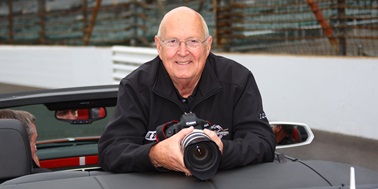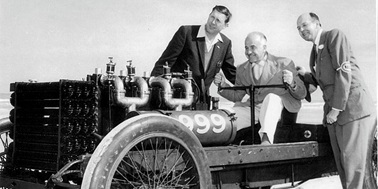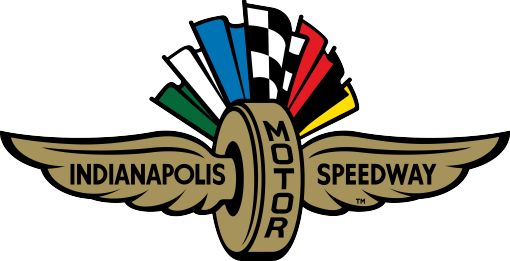Roger Penske is renowned as one of America’s most successful businessmen.
But before that, Penske made his name as one of America’s most successful auto racing team owners. And long before that, he was a highly successful race car driver, a road racer good enough to earn recognition from Sports Illustrated as the magazine’s 1961 “Sports Car Driver of the Year.”
Penske’s passion for auto racing is directly responsible for his reputation and success as a businessman. In 1965, he made a calculated decision to focus on business and leave the driving to someone else; starting with a single Chevrolet dealership in Philadelphia and a six-man race team that fielded cars for the Mark Donohue across the entire spectrum of automobile racing, Penske has cultivated a corporate empire that manages businesses with revenues in excess of $16 billion, operating in nearly 2,900 locations and employing more than 36,000 people worldwide.
“I was a good race driver, but I don’t know that I was a great race driver,” Penske told Motor Trend in 2005. “I made the decision to become a businessman instead of a race driver when I became a Chevy dealer. Jim McGee had asked me to test at Indy, to drive Indianapolis in fact. I wasn’t able to do it, and Mario Andretti took the test in that car. Mario went on to be one of the greatest race drivers of all time. I took the business route.”
It proved to be a wise move for Penske. That lone Chevy dealership has blossomed into 336 retail franchises representing 42 different nameplates. And Penske Racing has grown too: The team now fields full-time entries in the IZOD IndyCar Series, and NASCAR’s Sprint Cup and Nationwide Series.
And the racing and business sides of Penske’s empire remain closely connected. He attends almost every race his cars compete in, sometimes multiple events on the same weekend. You could say that racing is his hobby, except he takes it far more seriously than that. At 75, he’s still an active participant, a team owner who leads by example. At IndyCar races, he calls Ryan Briscoe’s race strategy.
“The racing is obviously a great catalyst for everything we do,” Penske remarked. “It’s our marketing arm, though we don’t spend a lot of money, other than our automotive retail arm, where we have certain advertising campaigns. We built the truck-leasing brand because of the racing heritage over the last 25 years, and I think they’re interconnected, though there’s not a clear delineation where one starts and one stops. It’s something we use as customer entertainment, as employee entertainment.”
Still, after all of Mr. Penske’s achievements on and off the racetrack, he’s most famous for one thing: An unmatched record of 15 victories as a team owner in the Indianapolis 500.
Penske’s achievements at IMS will be celebrated on Saturday, May 26 during ‘Legends Day Honoring Roger Penske’ at the Speedway. It will mark the 40th anniversary of Penske’s first Indianapolis win, earned by Donohue in 1972.
Other featured events on Legends Day include the annual Public Drivers’ Meeting on pit road adjacent to the Tower Terrace grandstand, autograph sessions with the 2012 Indianapolis 500 starting field as well as former Indy 500 drivers, and a racing memorabilia show featuring vendors from the United States, Europe and Australia.?
Admission to IMS on Legends Day is $10 for adults, with children 12 and under free when accompanied by an adult.
Since entering Indy car competition in 1968, Team Penske has won 167 races and ten full-season championships. But it’s those 15 wins at Indianapolis that stir the memories, and even sixty years after attending his first race at the Speedway, the place remains special to Penske.
“I don’t think you can come to this race track and think it’s ho-hum,” Penske marveled. “This is the greatest race in the world, and I love coming here. I look forward to it every year. We spend a lot of time and effort planning. One of the things we say to our people is that we come here every year like it’s the first time. And when we leave here after the race, we’re already thinking about next year’s race. That’s the kind of preparation it takes to be successful at Indianapolis.”
Team Penske has won all four IndyCar Series races in 2012 and Verizon-sponsored driver Will Power leads the point standings. Power has three consecutive wins after his teammate Helio Castroneves, who is second in the points, won the season opener at St. Petersburg.
Castroneves is considered one of the strong favorites at this year’s Indy 500, and the Brazilian will be aiming to join Rick Mears, Al Unser and AJ Foyt on the prestigious list of four-time Indianapolis winners.
Here are highlights of Penske Racing’s history in Indy car racing and the Indianapolis 500:
1968: Entered a pair of USAC-sanctioned road races, earning top-six finishes in both.
1969: Donohue took ‘Rookie of the Year’ honors at Indianapolis. He qualified fourth and was running second late in the race when an engine failure dropped him to seventh.
1971: Donohue qualified P2 at Indy and led until gearbox failure on Lap 66. Scored first Indy car race win at Pocono 500.
1972: Gary Bettenhausen led 138 laps at Indy for Penske but broke, leaving Donohue to pace the final 13 tours for Penske’s first ‘500’ win. Donohue’s winning average speed of 162.962 mph stood as the race record for 13 years.
1975: Tom Sneva emerged unscathed from one of the most spectacular accidents in Indianapolis history. His flaming, flying Penske McLaren was captured in a memorable sequence of still pictures.
1977: Sneva turned the first official 200 mph qualifying lap at Indianapolis. He went on to win the 1977 USAC Indy car championship.
1978: Sneva repeated as USAC national champion and averaged 202.156 mph on his pole-winning Indy qualifying run.
1979: Rising star Rick Mears won the Indy 500 from pole position and also triumphed in the CART-sanctioned Indy car championship.
1981: Bobby Unser claimed a controversial victory for Penske in the Indianapolis 500, while Mears scored his second CART championship.
1982: Mears fell 0.16 second short of Gordon Johncock in what was then the closest finish in Indy 500 history. A third season title for Mears.
1983: Al Unser won the CART championship for Penske.
1984: Mears earned his second Indy 500 ring, but was severely injured later in the year and missed most of the 1985 season.
1985: Danny Sullivan performed the miraculous ‘spin and win’ at Indianapolis.
1987: Al Unser stepped in for Penske as a last minute substitution after Danny Ongais was injured in a crash. Unser drove a year-old car that had been on display in a Pennsylvania hotel to his fourth (and Penske’s sixth) Indianapolis victory.
1988: Penske’s Mears, Sullivan and Al Unser swept the front row at Indy, and Mears went on to score the victory.
1989: Mears claimed pole at Indy and a Penske chassis won the race, but it was driven by Patrick Racing’s Emerson Fittipaldi. Six of Penske’s Indianapolis 500 wins were achieved in Penske-constructed chassis.
1991: Mears won his fourth and final 500 in thrilling fashion, passing Michael Andretti around the outside for the lead in the late stages. ‘Rocket Rick’ also earned his record sixth Indy pole.
1993: Now driving for Penske, Fittipaldi took his second Indy crown and caused controversy by drinking orange juice in Victory Lane.
1994: Penske commissioned Ilmor Engineering to build a custom racing engine to USAC’s ‘stock block’ rules for the Indianapolis 500. The resultant Mercedes-Benz badged engine produced more than 1,000 horsepower, swept pole position and the race in the hands of Al Unser Jr., and was promptly legislated into submission. Perhaps the ultimate expression of Penske’s desire to achieve what Donohue called ‘the unfair advantage.’
1995: Without the excess horsepower they enjoyed in 1995, the deficiencies of Penske’s chassis and Goodyear tires were exposed and Unser Jr. and Fittipaldi famously failed to qualify for the Indianapolis 500. The team elected to race exclusively in the CART series for the next few years and did not again compete in the Indianapolis 500 until 2001.
2000: A retooled Marlboro Team Penske returned to the winner’s circle for the first time since 1997 and Gil de Ferran won the CART series championship.
2001: Team Penske returned to Indianapolis for the first time since 1995 and scored a triumphant 1-2 result with Helio Castroneves and de Ferran. De Ferran went on to win his second consecutive CART championship.
2002: Low on fuel in the closing stages at Indy, Castroneves caught a lucky break when a late caution flew, allowing him to hold off a charging Paul Tracy for his second straight ‘500’ win.
2003: Though they drove different chassis in the Indy 500 (Castroneves a Dallara and de Ferran a Panoz/G-Force), the Penske drivers were equally matched. De Ferran won the race.
2006: Sam Hornish Jr. passed Marco Andretti exiting Turn 4 to claim a mesmerizing win at Indy. Hornish went on to win the IndyCar Series championship.
2007: Castroneves claimed pole and finished third at Indianapolis.
2009: Castroneves took the third of his four Indy poles with a remarkable run in windy conditions, then backed it up with his third win in the ‘500.’
2010: Pole at Indianapolis for Castroneves
Roger Penske and Indianapolis

Roger Penske is renowned as one of America’s most successful businessmen.
Latest News
View All News
Ron McQueeney, Longtime IMS Photographer, Dies at 80
Ron McQueeney, one of Indianapolis Motor Speedway’s best-known photographers and its longtime director of photography, passed away July 14 in Indianapolis. He was 80.

Riley Herbst Eager for First Cup Opportunity at IMS
Riley Herbst will be returning to Indianapolis Motor Speedway next week for NASCAR’s annual event, but this time he is stepping up to stock car racing’s biggest stage.

Indy 500 Winner DePaolo Laid Groundwork for Two Great NASCAR Teams
1925 Indianapolis 500 winner Peter DePaolo (photo, center) was instrumental in bringing a Ford factory team to NASCAR, which then led to the formation of the legendary Wood Brothers and Holman-Moody teams.
